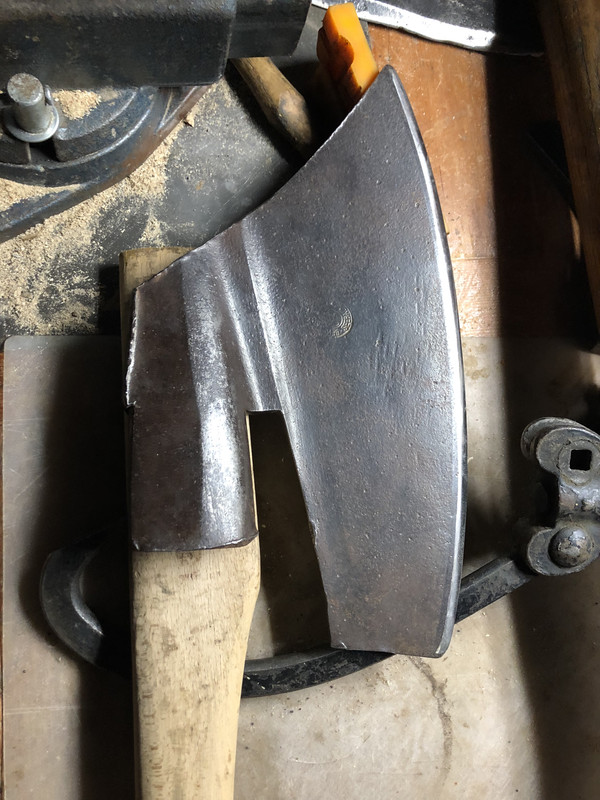Square_peg
Gold Member
- Joined
- Feb 1, 2012
- Messages
- 13,836
You say, a felling and a bucking, Square_peg, and I do so little of this work, fun as it is, that it's not something that gets much thought, but isn't notching from a-top basically very similar?
Absolutely. Juggling is a bucking operation.
Let's also not forget to mention it, very basic, that even when the chopping direction is reversed the grip configuration remains the same, right?
That depends. While just bucking a log in two, blows from the left or right use this same grip. But as I mentioned in an earlier thread there is sometimes an advantage to juggling in the opposite direction that you intend to hew with the broadaxe. In other words I would juggle left-handed with the left hand on the knob and from the opposite end of the log. This way the frayed loose ends of wood from juggling face the opposite way as the broadaxe will approach it, preventing the broadaxe from following a fray too deeply into the surface. It's a subtle difference but it helps me a little. E.G., in the image above I'm hewing from right to left. It would be advantageous to have juggled from left to right. I think I had done a mix on that piece.
Still with that said, you are choosing to position your inside foot forward and straddle the plane, or the lay-out line.
I am constrained by the weight of my hewing axe, about 8 pounds as hung. Really heavier than needed for this type of use. As a result of the weight I'm trying to keep the work as close to my center of gravity as possible. A man is strongest when the work is at his center. This also gives me more control and more stamina.
When the log is lower to the ground I may rest my left knee atop the log and do without the makeshift platform. It's all about positioning the work in your strength zone. This is also a founding principle of Wing Chun style of martial arts.


